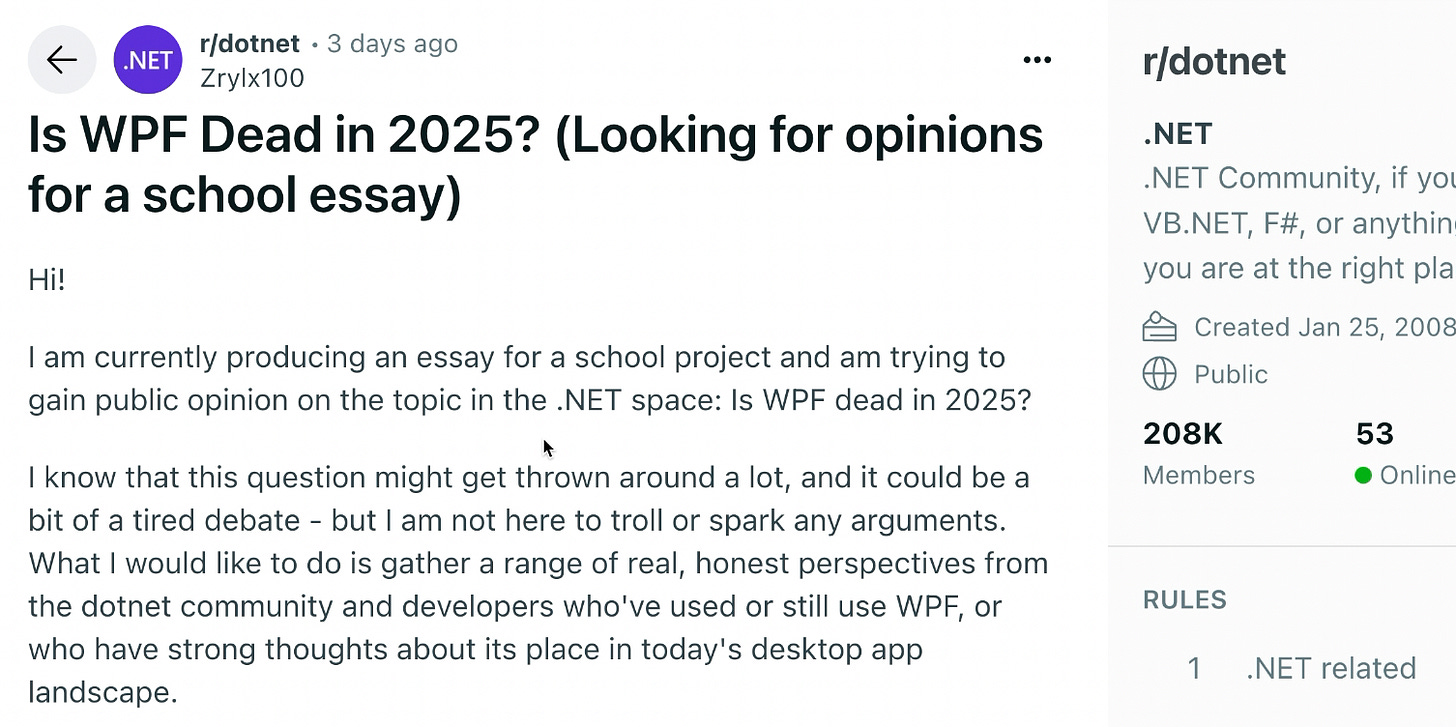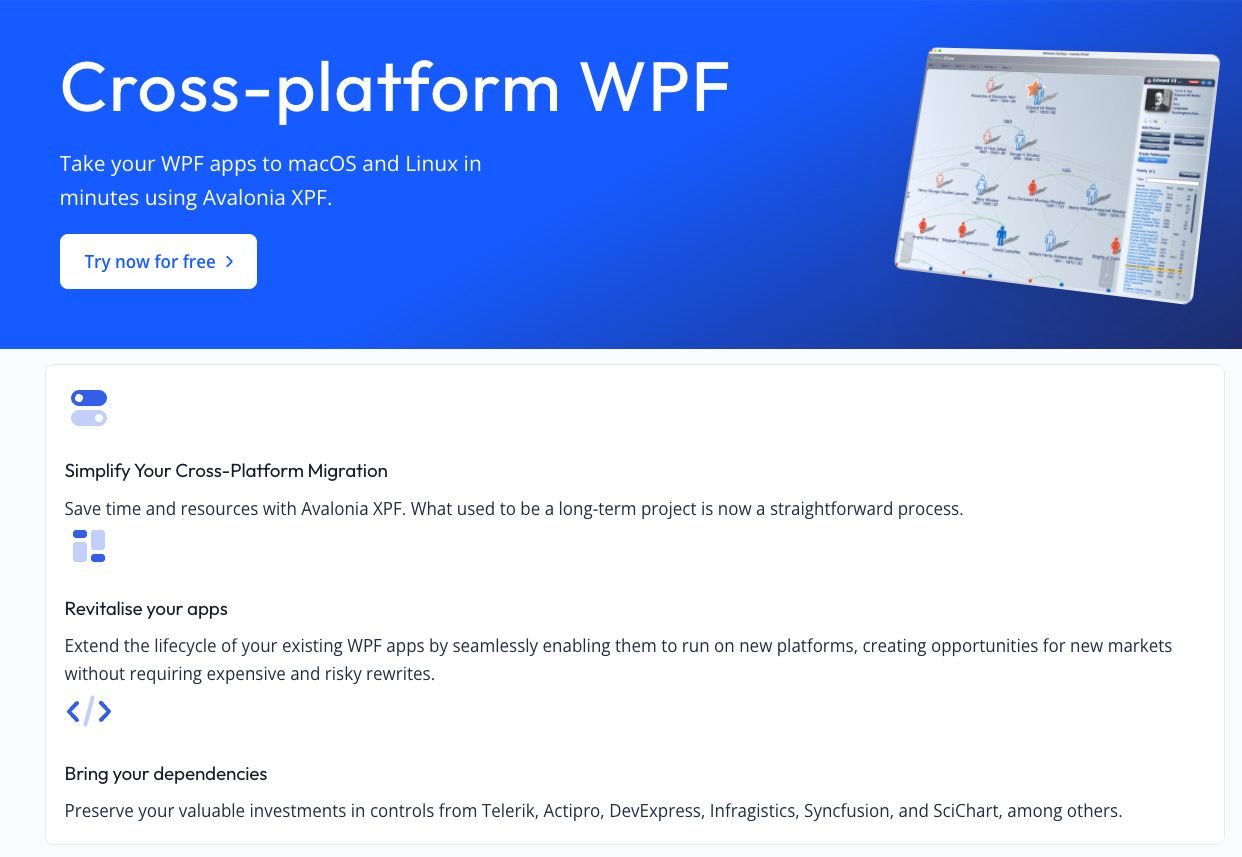Deep dive this week into an important question that Redditors get in a panic about quite often - is WPF Dead?
Let's look at the full state of WPF today.
Alive and Well in the Enterprise and “boring” stuff
First things first: Microsoft is still actively working on WPF. It was made part of the open-source .NET Foundation and continues to receive meaningful updates. In .NET 8, we got hardware acceleration for RDP and a new folder dialog. For .NET 9, Microsoft is adding a Fluent theme to make WPF apps look more like modern Windows 11 applications, a feature many thought was reserved for newer frameworks. The official roadmap even shows plans for .NET 10. This isn't just life support; it's active development. This predictability is precisely what enterprises value, which is why you'll find WPF powering critical line-of-business applications on oil rigs, in maritime shipping, and across the manufacturing industry—the so-called "dark matter developers" who don't always show up in surveys but build the backbone of industry.
Third parties make bank on WPF
WPF’s longevity isn’t just thanks to Microsoft. I’d wager that third parties make more money from WPF than MS does themselves and are incentivized to keep it that way.
A massive ecosystem of vendors and open-source projects keeps it vibrant. Companies like Telerik and DevExpress continue to sell and support extensive component libraries, investing thousands to ensure developers can build complex, feature-rich applications quickly. At the same time, the open-source community is keeping things fresh. Before MS added the Fluent theme to WPF, popular projects like MahApps.Metro give WPF apps a modern Windows look and feel like Windows 10 rather than the classic WebForms inspired take, while Material Design in XAML allows you to build a Windows app that looks like an Android app. This combination of corporate and community support is a self perpetuating machine.
The Geographic Divide and the Ghost of WinUI
So if it's not dead, where is it hiding? I think the debate is still a thing because because WPF's popularity is highly regional. In the United States, the average salary for a WPF developer is a chonky $130,000, suggesting strong demand. But cross the pond to the UK, and the number of job postings mentioning WPF is vanishingly small. In Japan, they're practically non-existent outside of niche finance roles. Surprisingly, Google Trends data shows a huge resurgence of interest in China and South Korea. Meanwhile, Microsoft's intended successor, WinUI, has seen development activity fall off a cliff since late 2021, with its GitHub commit history looking like a ghost town compared to the flurry of activity around .NET MAUI, Avalonia, and even WPF itself.
I miss WinUI btw. Seriously. WinUI 2.x was fast, compiled native and created apps indistinguishable from the Windows 10 and Windows 11 shells. In my view if you cannot create the native Settings app pixel for pixel perfect then its not a “native” app toolkit.
The Spirit Lives On: Avalonia and OpenSilver
While WPF remains a Windows-only affair, its XAML-based spirit is finding new life in cross-platform frameworks. Avalonia proudly calls itself the open-source WPF successor and even offers a product, XPF, designed to take your existing WPF applications and run them on macOS and Linux in minutes. It’s what Microsoft tried—and failed—to do with "WPF Everywhere" back in 2006, a project that morphed into the ill-fated Silverlight. And just like WPF, Silverlight's spirit has been resurrected by the community in the form of OpenSilver, which is picking up where Microsoft left off. For developers who honed their XAML skills on WPF, these frameworks offer an exciting path forward without abandoning their expertise.
OpenSilver - A modern, open-source reimplementation of Silverlight
Xamarin.Forms Platform Support - Microsoft Docs (Historical)
The Verdict
So, is WPF dead? No. But it has probably flatlined.
Its spirit, however, has broken free from its Windows-only confines and lives on in modern, cross-platform frameworks. The transferrable design patterns, XAML, MVVM etc are reusable across Uno and Avalonia today, even as .NET MAUI sails off into the sunset.
View this post in mega cringe video form:




